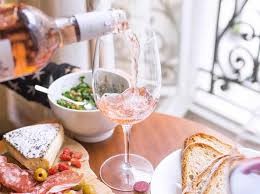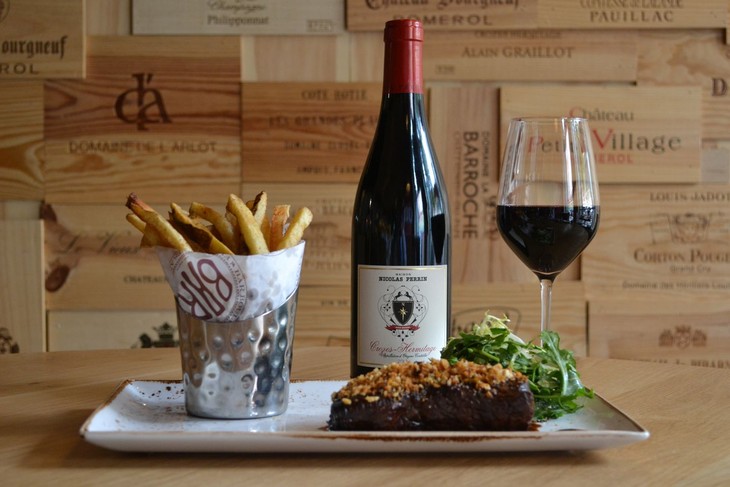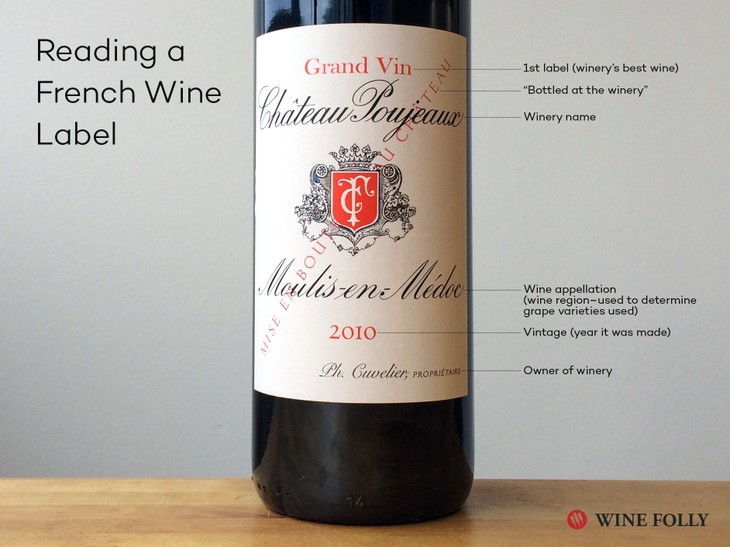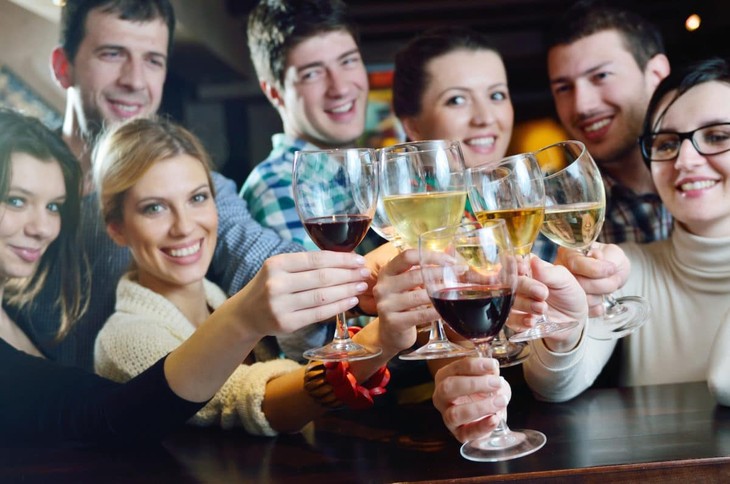(VOVWORLD) - Welcome to another edition of VOV247’s Culture Rendezvous. We’re having Antoine Brochet, who is back to share with us more about French wine, including how to read a French wine label, order wine in a French restaurant, make a toast in French, as well as some French wine etiquette.
 Photo: John Canelis snippetsofparis.com Photo: John Canelis snippetsofparis.com |
VOV Reporter: Welcome back, Antoine! We’re happy to have you here again on VOV247 Culture Rendezvous. In the previous show, we talked about the history of French wine, different kinds of wine produced in France, as well as if French people drink a lot of wine or not. In this show, we’ll explore more about French wine in people’s daily consumption like what do French people often eat with wine, for example?
Antoine Brochet: Sure. First of all thank you for having again this week. I’m so happy to be here and to share some more about French wine. Well, another big rule of drinking French wine is that wine is rarely something you drink on its own. Thanks to its diversity and style, wine is pairing really well with food, whether it’s cheese plate or a full-blown meal. So, what do you eat with French wines? Generally speaking, we say you pair the wine with the food that resembles to eat. French red wine goes with most kinds of meat, while white is usually paired well with white meat or fish. Now what if have sweet wine? You will probably guess this will usually goes well with dessert. Of course, there are exceptions to these rules. For example, since coq au vin (which is white meat) is prepared with red wine - typically burgundy – it would be strange to drink it with white wine. If you’re confused, don’t worry: even French people might occasionally have trouble with wine and meat pairings which we call l’accord mets et vins.
 Photo: bostonglobe.com Photo: bostonglobe.com |
VOV Reporter: Wine is not only for drinking but also for cooking. What dishes do French people often cook with wine?
Antoine Brochet: Many famous traditional French dishes do contain wine. These include French onion soup, bœuf bourguignon, coq au vin, and moules marinières. In addition to these, both amateur and professional French cooks might decide to add a splattering of wine to certain other dishes. My grandma for example, loves to do this, for example. But this really depends on a person’s tastes and recipe choice. Don’t worry though. Normally, the alcohol in the wine burns off in the cooking process, so indulging in these dishes will only get you “food drunk”. That said, if you can’t consume wine for health or religious reasons, you can look for online versions of these recipes that don’t include it. At some restaurants, you may be able to ask for some of these without wine, or just choose a different option.
VOV Reporter: Well, talking about wine in a restaurant, how do we order wine in a French restaurant?
Antoine Brochet: As we said earlier, French wine can be complicated in many ways, but the basics of ordering it aren’t. You order wine just as you would any other drink. You can see some phrases for that, as well as an example of a typical exchange between a client and waiter right here.
That sample exchange is also useful because it mentions ice. In France, you NEVER add ice to wine. Ever. Unless maybe you’re in the privacy of your home or hotel room, and even then, if you’ve been in France long enough, you might feel like you’re being judged by the walls. Of course aside of jokes, there are a few differences between ordering most beverages and ordering wine in France. For one thing, most restaurants, cafes, brasseries, and other eateries in France will give you the choice of ordering un verre (a glass), un pichet (a small pitcher), or une bouteille (a bottle) of wine. For that specific part, when the server brings you the wine, they’ll pour a little into a glass and wait for you to smell and taste it to give your approval. Many people get confused at this stage. Don’t be intimidated – what you’re expected to do here is to identify whether the wine has any defects. And one of the most common, although it is very rare, is when the wine is corked, When wine is corked, it will smell very bad, smt like the wet cardboard or dirty clothes. Trust me, you will know. Don’t worry, just go through the motions, and unless the wine really does smell or taste weird or horrible (very unlikely), just nod with approval and the server will top off your glass and serve everyone else on the table.
 Photo: winefolly.com Photo: winefolly.com |
VOV Reporter: Now a very important question for anyone fancying buying French wine. How to read a French wine label?
Antoine Brochet: Well, another thing that can help you choose a good quality wine, especially if you’re offering it as a gift, is knowing how to read certain marks, abbreviations, and even codified colors on French wine bottles. The most famous is the abbreviation AOC. This stands for Appellation d’Origine Contrôlée. Essentially, it means a wine has been produced under strict controls regarding everything from the area it comes from, to the winemaking process. It’s also been subject to an official tasting. Meanwhile, AOP is another abbreviation you might find, Appellation d’Origine Protégée, though only on more recent wine bottles, since it hasn’t been used for long. So in short, AOC is the French regulation used for controlling quality and origins of wine that has been created since 1930s. AOP is the extension of the regulation to the entire European Union that has been in practice since the 1990s. So essentially, all you have to remember is if a wine has “AOC” or “AOP” on the label, that’s a sign of quality.
 Did you know that in France, before drinking, you have to wait for everybody’s drink to be on the table? Even in a restaurant. Photo: frenchtoday.com Did you know that in France, before drinking, you have to wait for everybody’s drink to be on the table? Even in a restaurant. Photo: frenchtoday.com |
VOV Reporter: Now let’s say we have chosen the right wine and it’s time to enjoy it. So how to make a toast in French?
Antoine Brochet: One aspect of French wine etiquette is the toast. You may read that there’re a lot of complicated protocols tied to this, like not crossing glasses with another person, and looking each other in the eye when you make the toast. This is generally true in formal settings. But generally speaking, though, whether you’re sharing a casual meal at a bistro or a friend’s house, or a low-key family lunch or dinner, the most consistently upheld French toasting customs is to say a traditional toasting word or phrase and be sure that everyone clinks their glasses (trinquer) with everyone else.
VOV Reporter: And what do you say when you make a toast in French?
Antoine Brochet: Well, the rough French equivalent of “Cheers” is À votre santé (for someone you don’t know well or address in a formal way, or for a group) or À ta santé (for someone you’re close with). These both mean, “To your health.” On informal occasions, you’ll probably hear this shortened to À la vôtre or À la tienne (literally, “To yours” – meaning “To your health”), or even simply Santé (Health.)
Another informal French toast is “Tchin” or “Tchin tchin.” Interestingly, most sources I’ve read, in documents or movies, always show this as “Tchin tchin,” but with my French family and friends, we always say one “Tchin.” There doesn’t seem to be a difference between using one tchin or two – it seems like it just depends on what people around you say. But either way, you will be understood.
These are the most common ways to make a toast in French. Obviously, a long speech could also be made if you’re toasting someone for a special occasion. But these short words or phrases are actually what you’ll hear most often.
VOV Reporter: Thank you so much, Antoine, for wonderful information about French wine. Now I feel a bit more confident ordering wine in a French restaurant, reading a French wine label, or making a toast in French.
We hope you enjoy our show today and thank you all for spending time with us.